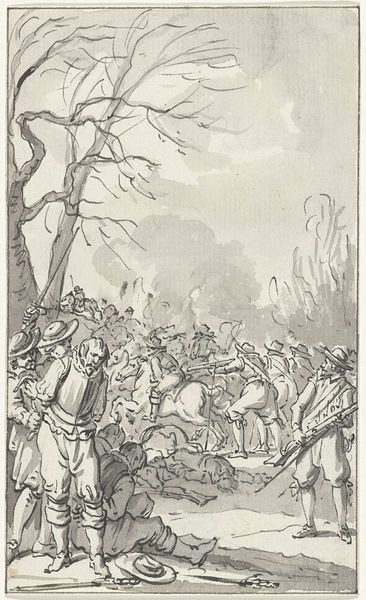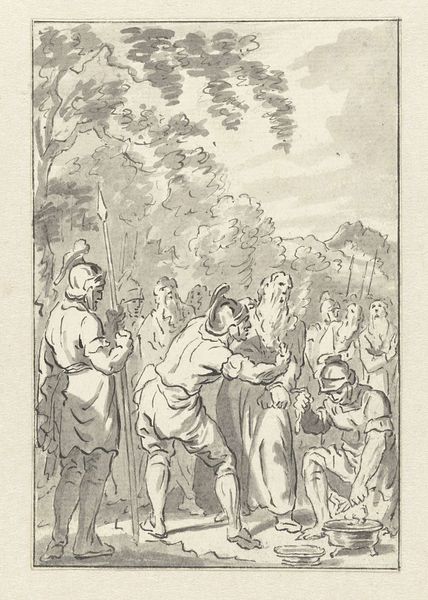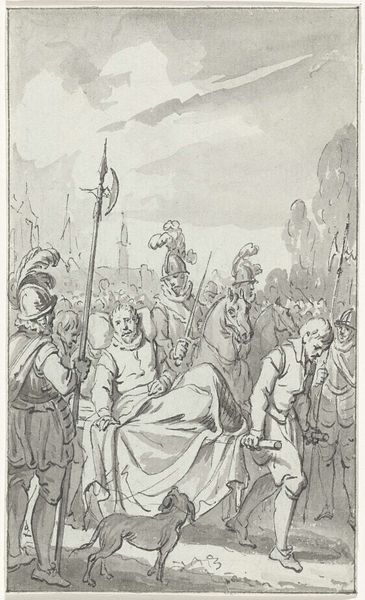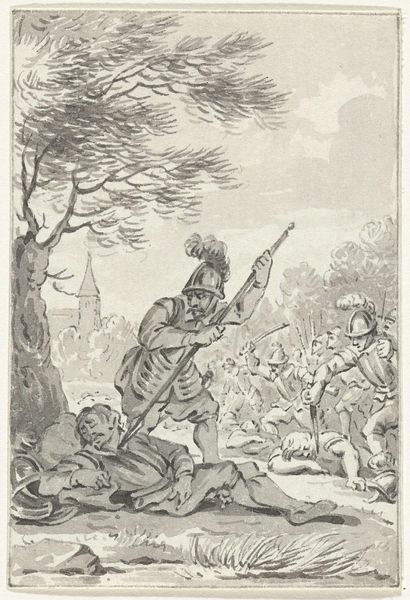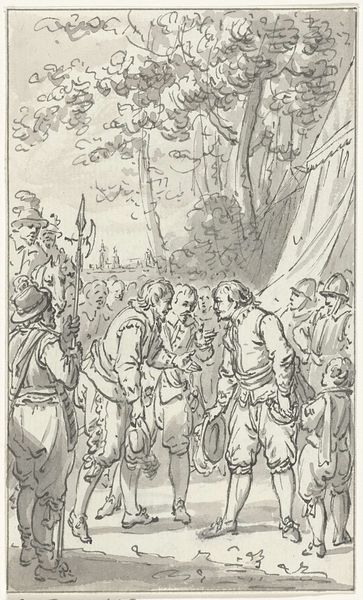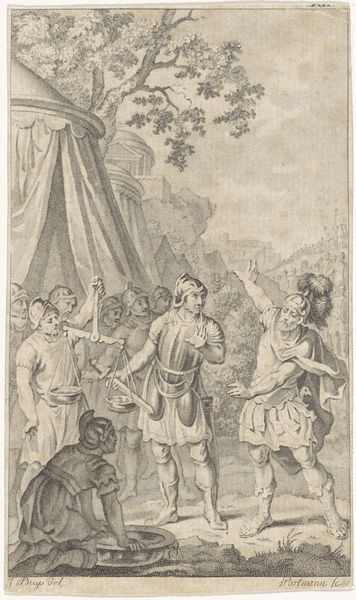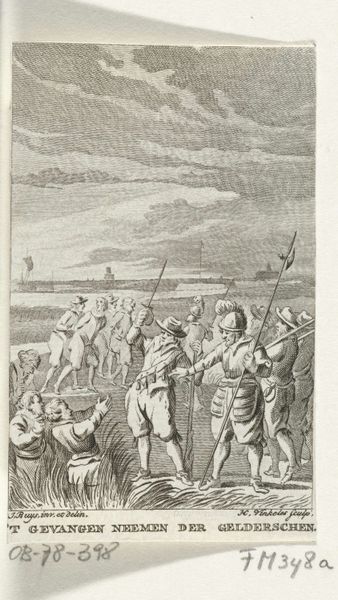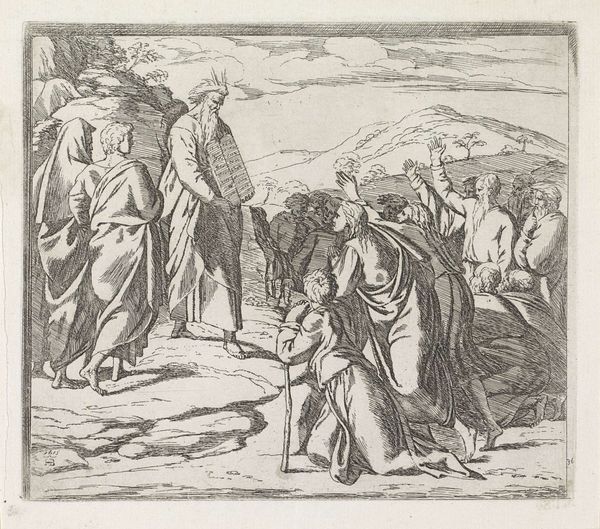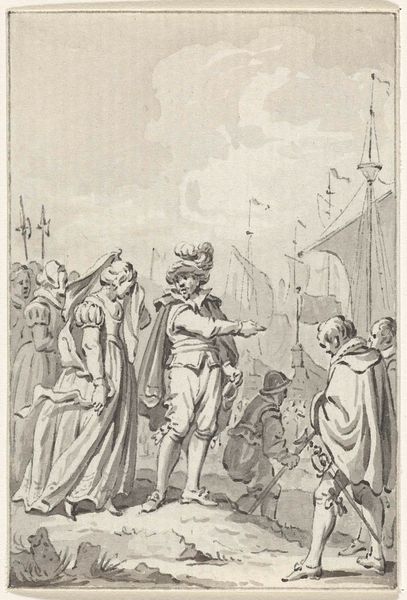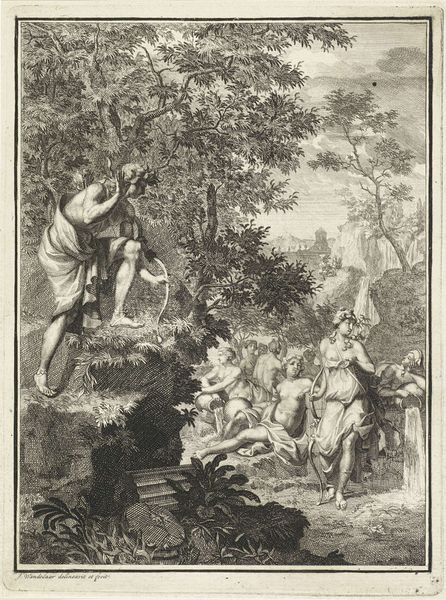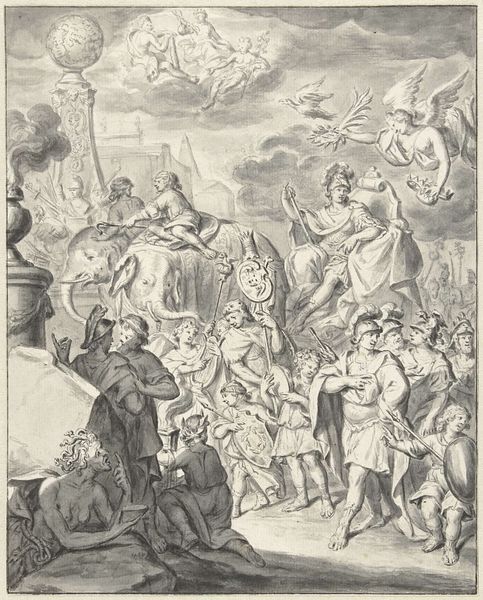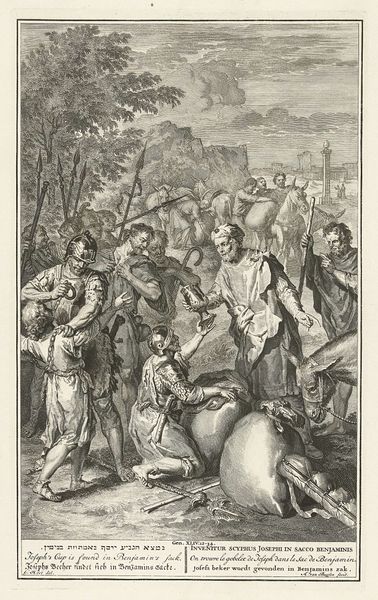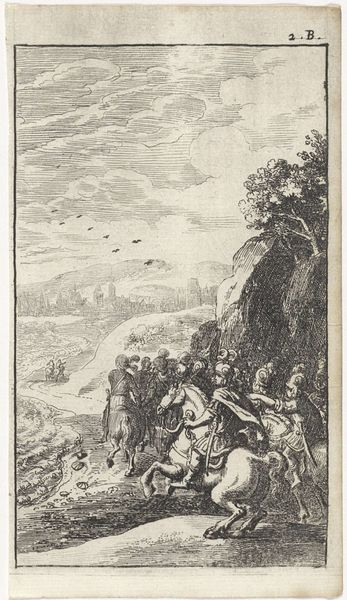
De Saliërs in Batavië onderwerpen zich aan keizer Julianus, 358 1779 - 1784
0:00
0:00
drawing, paper, ink
#
drawing
#
neoclacissism
#
pen illustration
#
figuration
#
paper
#
ink
#
genre-painting
#
history-painting
#
academic-art
Dimensions: height 148 mm, width 90 mm
Copyright: Rijks Museum: Open Domain
Editor: So, this is Jacobus Buys' "De Saliërs in Batavië onderwerpen zich aan keizer Julianus, 358," a pen and ink drawing from between 1779 and 1784. I'm immediately struck by the contrast between the powerful, upright Roman figures and the humbled, almost pleading Batavian people. What’s your interpretation of this dynamic? Curator: It’s crucial to understand this image within its historical context. Buys created this drawing during a time of growing Dutch nationalism and interest in their own history, and their relationship to classical antiquity. Think about what it means to depict a scene of subjugation during a period when notions of national identity and sovereignty were being formulated. How does this image reflect and potentially reinforce colonial power structures? Editor: That's a powerful point. So, the drawing isn't just a neutral depiction of history, but actively participating in shaping a national narrative, perhaps one that glosses over the violence of imperial dominance? Curator: Precisely. We have to critically examine whose perspectives are centered and marginalized. Who is telling this story and for what purpose? Consider also the artistic choices Buys made – the clear lines and classical style – that lend a sense of order and legitimacy to the scene. Does this aesthetic reinforce the perceived superiority of the Roman Empire and, by extension, similar power structures of Buys' own time? Editor: It makes you wonder how the Batavians themselves would have represented this encounter, if they had the power to do so. It’s unsettling how easily such imagery can normalize oppression. Curator: Exactly. By interrogating the image in relation to concepts like cultural hegemony and representation, we start to reveal the complexities of power, and how art is an active participant in these dynamics, not simply a mirror reflecting reality. What will you take away from this when you next visit this museum? Editor: I'll definitely be more critical about the stories that historical artworks are telling. Thank you for offering that important perspective, it definitely shifted my perception.
Comments
No comments
Be the first to comment and join the conversation on the ultimate creative platform.
